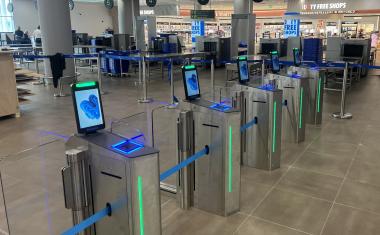Video Moving into the Perimeter Security Segment
Video surveillance cameras and analytics continue to be pushed out toward the perimeter at a high rate and are becoming an integral part of electronic perimeter security solutions....

Video surveillance cameras and analytics continue to be pushed out toward the perimeter at a high rate and are becoming an integral part of electronic perimeter security solutions. According to a recent report published by IHS, the global market for intelligent devices in perimeter security applications is forecast to top USD 200 million in 2013.
Historically, sensors have been the primary means of detection for perimeter security applications. In recent years; however, there has been a growing trend for cameras and analytics to be used in addition to sensors on a perimeter. The perimeter security industry has always been based on layers, so the addition of video only reinforces this ideology.
Video and especially video analytics has been the fastest growing portion of the perimeter security industry since before 2010. Prior to this time, perimeter security applications mostly offered detection without verification or identification. Perimeter security integration with video is proving to be a great enhancement in terms of efficiency and the reduction of false alarms.
Identification of intruders has become one of the most talked about trends in recent months for perimeter security. This trend is partly being driven by the demand to lower false alarms, lower costs and the ability to provide patrols and guards in the field with real time information on the location and status of an intruder. And now, end-users have several options for identification.
Slew-to-cue functionality remains one of the most talked about trends and uses of video for perimeter, especially when integrated with a ground surveillance radar. In its simplest form, video is integrated with a PIR for video motion detection. Lastly, video analytics has two main forms: embedded on a device (camera, NVR, DVR or encoder) or centrally located and server based. Which video analytics offering is more robust with the most functionally remains heavily debated and is primarily dependent on the end-users' requirements.
Although analytics is poised to alter the perimeter detection market, the perimeter security industry will continue to use multiple layers and will not rely solely on video. Analytics has improved since its introduction to the market but false alarms continue to plague end-users and programming/ adjusting the analytics remains hands-on for the installer/ integrator. Additionally, the environment plays a large role in the accuracy of the solution. Very crowded areas do not work well for analytics, while sterile areas with fewer crowds helps improve performance.
Overall, use of video has been limited in perimeter applications compared with sensors; however, this has begun to change with the degree of integration and reliance on identification. In the medium to long-term, video analytics may begin to displace more traditional sensors as a means not only to identify, but detect as well.













